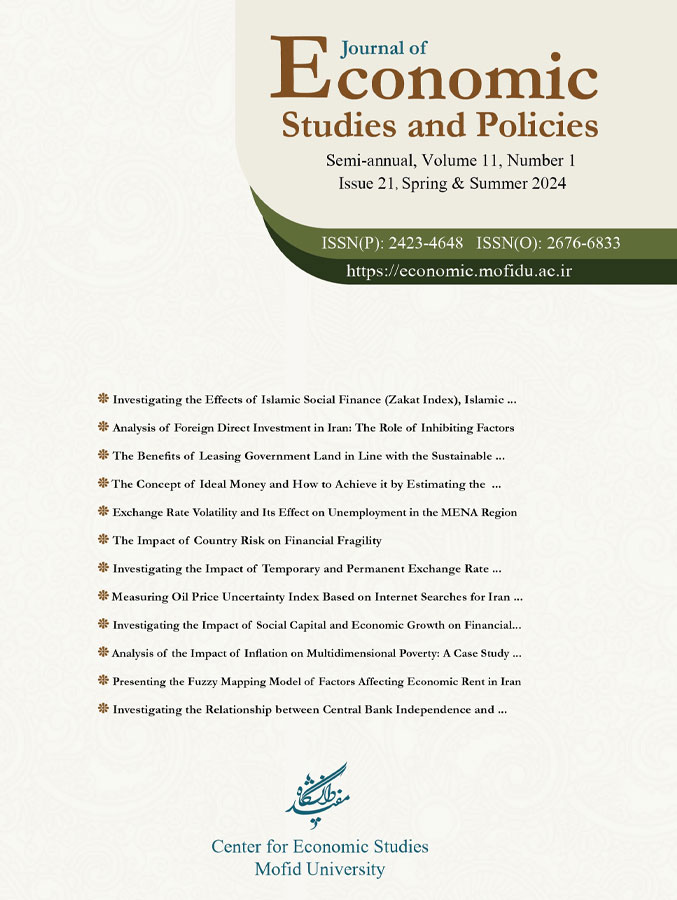Publisher
Mofid University
Responsible manager
Seyed Massoud Mousavi Ardabili
Editor-in-Chief
Prof. Akbar Komijani
Print ISSN
2423-4648
With reference to the letter no. 3/2910/1373 dated 01/22/2001 of the Ministry of Science, Research and Technology, “Letter of Mofid” (Nameh-ye Mofid) is ranked as a research journal ; also with reference to the letter No. 3/11/2249 dated 03/17/2010 of the Ministry of Science, Research and Technology, the Research journal of “Economic Letter of Mofid” is henceforth published under the new title of "Economic Studies and Policies."
The Semi-annual Journal of “Economic Studies and Policies” is a journal with anonymous (closed) refereeing system that is published for free to promote economic concepts in Iran, reflect the existing views and access easily. It publishes articles free of cost. All costs related to the compilation, preparation and publication of articles are covered by MU. The journal is published in both print and digital editions once every two seasons; articles are accepted in Persian and English and they are reviewed. The minimum time to review articles in “Economic Studies and Policies” will be eight weeks.
The Semi-annual Journal of “Economic Studies and Policies” is a journal with anonymous (closed) refereeing system that is published for free to promote economic concepts in Iran, reflect the existing views and access easily. It publishes articles free of cost. All costs related to the compilation, preparation and publication of articles are covered by MU. The journal is published in both print and digital editions once every two seasons; articles are accepted in Persian and English and they are reviewed. The minimum time to review articles in “Economic Studies and Policies” will be eight weeks.

